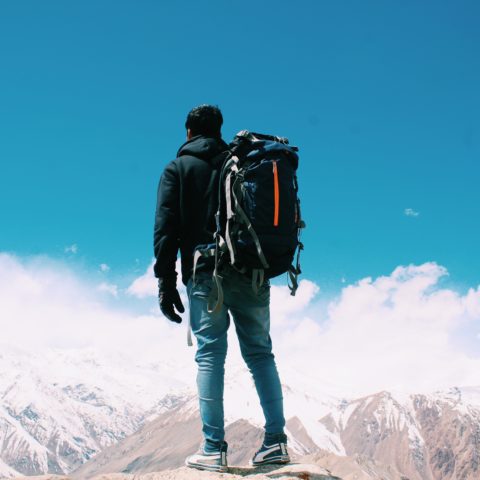
Many people who climb into thin air for the first time have no experience of how their body adapts to the situation. Some people know from experience that they are susceptible to altitude sickness. In both cases it can be wise to monitor any reactions that occur, so that an early diagnosis can be made of whether acute altitude sickness or cerebral oedema is developing. At the bottom of this article you will find a questionnaire and an (AMS) scoring form that can be used to record and monitor the symptoms of altitude sickness that are important when climbing. This should preferably be done by travel companions. Moreover, there is an important warning: the (variation in the) number of points does give an indication, but can never be considered as 'proof' of whether or not you have acute altitude sickness or cerebral oedema. The most important thing is always: in case of doubt, assume altitude sickness!
The form makes it possible to keep track of the following during the climb:
- You climb speed and you sleeping height. This data is important because it gives you insight into the question at what height and after which day rise any complaints have started.
- Complaints that may indicate altitude sickness. The passage of time over the various climbing days gives you good insight into your fitness. An increasing score is of course a serious warning.
- Symptoms which may indicate the most serious form of altitude sickness: cerebral edema.
- The nature and quantity of the medicines such as acetazolamide that you may have used. This is important in the unlikely event that you need to consult a doctor.
- You breathing frequency and you heart rate at the beginning and the end of every day. These are particularly important to help you determine whether you are developing pulmonary edema. Under normal conditions and at rest, most people have a heart rate below 80 per minute and a breathing rate below 15 per minute. It is of course best to measure your own values at home before you leave and to record an average value. Then you know roughly what it should be like. Keep in mind that your heart rate at rest can increase by 10 to 30% (depending on the altitude reached) during the first days of the climb, to compensate for the low oxygen content in the air. During the acclimatization process, a gradual decrease occurs again, but during a stay of up to ten days in the mountains, your heart rate usually remains somewhat higher than at sea level. The ambient temperature also influences your heart rate due to the heat-regulating function of your body. That influence is between 20 and 30 degrees Celsius 10 to 20%, but rather unpredictable, because the clothes that you wear also play a role in that. Therefore consider all numbers as guidelines and at least be alert if your resting heart rate is above 100 in the morning and / or gradually increases over the course of consecutive days, measured at the same time at rest.
The complaints and symptoms on the assessment form do not make a distinction between acute altitude sickness, pulmonary edema and brain edema. Regardless of the number of points that you 'score', it remains in force that you must always determine whether there are any complaints or symptoms that should lead to immediate action (usually descending). Theoretically you can have a relatively low score, while it is about phenomena that if they occur without many other complaints (which incidentally is rarely the case) are life threatening. So never rely solely on numbers, but use your mind.
You can 'score' a maximum of 24 points. You will die after death, and you must never get that far. Only an AMS score below 5 allows you to wait on the spot with the help of some medication. If you decide to continue climbing, stick to the recommended ascent speed and do so only in situations that allow a fast descent. All other categories require more drastic intervention, whereby the nature and the speed with which action must be taken depend on the seriousness.
Download the altitude sickness assessment form
Questions about altitude sickness following this article? Then take it contact with us.
